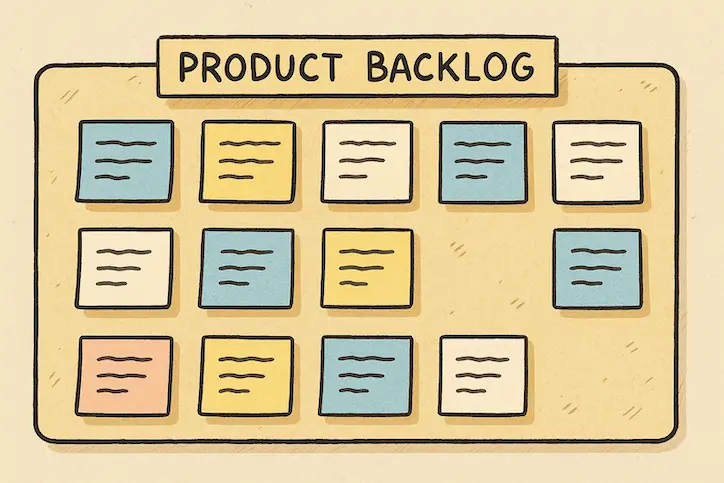What is digital product backlog?
The product backlog is a dynamic and living list that gathers all the tasks needed during the development of a digital product in one place. Each item in the backlog includes work descriptions, features, improvements, bug fixes, or technical tasks that contribute to the product’s growth.
In other words, it is a constantly updated task list that shows what a digital product should be and what it will become.
Items that can be included in the digital product backlog
In particular, the following items are commonly added:
- New Features: Functions that meet user needs
- User Stories: Real user scenarios
- Bug Reports: Product issues and fixes
- Technical Debt: Technical infrastructure improvements
- Improvement Suggestions: UX/UI and user experience ideas
- Research / Spikes: Explorations to understand unknowns
- Security, Legal, and Compliance Tasks
Digital product backlog purpose and importance
The backlog plays a vital role. Specifically, it helps in the following ways:
- Helps prioritize: Moreover, it makes it clear what to do and when.
- Creates transparency: As a result, all stakeholders can see the product’s direction.
- Maintains focus: Consequently, it builds a clear roadmap free of unnecessary tasks.
- Strengthens team collaboration: Furthermore, product, business, and technical teams stay aligned.
Without a backlog Product development becomes random. Therefore, teams and stakeholders may work out of sync.
How digital product backlog works or is applied
Generally, the process follows these key steps:
- First, Gather Items: Collect ideas, user feedback, and business needs.
- Then, Prioritize: Identify which items are more valuable and urgent.
- Next, Break Down: Split large tasks into smaller, manageable ones.
- After that, Update and Refine: Review regularly and reprioritize if needed.
- Finally, Sprint Planning: Pull top items into sprints for development.
A good backlog stays flexible, always updated, and aligned with the product vision.
Digital product backlog related concepts
For clarity, here are related terms:
- Roadmap → A strategic, long-term plan, while the backlog is operational and detailed.
- Sprint Backlog → A specific list of tasks selected from the product backlog for the sprint.
- Issue Tracker (Jira, Trello, etc.) → Tools used to manage the backlog, not the backlog itself.
Common Mistake: The product backlog is just a to-do list (WRONG). In reality, it guides both tactical and strategic directions.
Tips to keep your backlog relevant
To maximize value, always:
- Share often with the team and keep it transparent.
- Always write with the user in mind.
- Define items clearly and simply.
- Clean up and update regularly.
- Prioritize based on data and insights.
Be Proactive: Therefore, don’t let the backlog gather dust or lose its purpose.
Common backlog myths (and the truth)
❗Myth: The backlog is just a “to-do list”.
Truth: In fact, it’s a tool that guides product development.
❗Myth: Only the PM owns it.
Truth: The whole team should contribute.
❗Myth: It only holds detailed tasks.
Truth: Strategic ideas and discovery items also belong.
❗Myth: It’s filled once and done.
Truth: It’s a living, evolving structure.
Real product backlog examples in action
For example, here’s an e-commerce product backlog:
- [Feature] AI recommendations in the product search algorithm
- [Bug] Coupon not working correctly in the cart
- [Improvement] New user onboarding screens
- [Spike] Users don’t understand the return process → Research needed
- [Compliance] GDPR compliance update
Continuous Improvement: As the product grows, the backlog becomes both richer and more streamlined.
Summary and reminder
In conclusion:
Product Backlog = The compass for product development
- It’s alive → Always evolving.
- Collaborative → Not owned by one person, but by the whole team.
- Strategic and tactical → Guides direction and organizes daily work.
Ultimately, it’s one of the strongest tools to show not just what to do, but why and how to grow your product.
It’s one of the strongest tools to show not just what to do, but why and how to grow your product.
